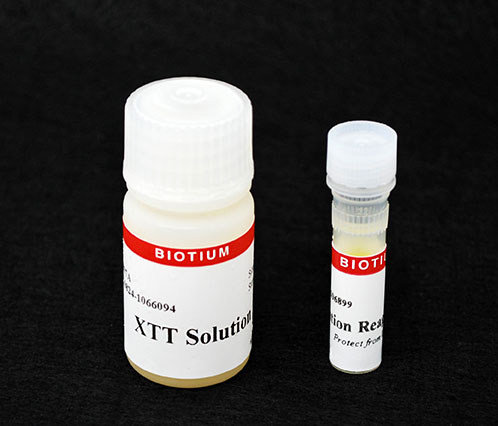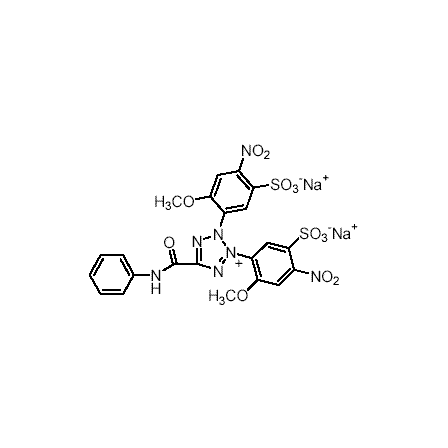XTT Cell Viability Assay Kit
Wishlist updated! View wishlist
Product Description
The XTT Cell Viability Assay Kit provides a simple method for determining live cell numbers by absorbance on a microplate reader. XTT is a tetrazolium derivative that is turned into a water-soluble orange product after reduction by mitochondrial enzymes that are only present in metabolically active live cells. The amount of orange product generated is proportional to the number of living cells in the sample.
- Measure cell metabolism by reading absorbance at 475 nm
- Non-radioactive, simple procedure
- XTT is a tetrazolium derivative
- Endpoint assay
- Unlike MTT, does not require solubilization step
Determination of live cell numbers is often used to assess the rate of cell proliferation and cytotoxicity caused by drugs and cytotoxic agents. The non-radioactive MTT assay developed by Mossman is one of the most popular viability assays; however, the product produced is non-soluble, and requires a solubilization step. Unlike MTT, XTT is reduced to a highly water-soluble orange-colored product instead of the insoluble formazan from MTT, thus eliminating the solubilization step required for the MTT assay.
The amount of water-soluble product generated from XTT reduction is proportional to the number of living cells in the sample and can be photometrically quantified at 475 nm. Continuous color development permits measurements at multiple time points for extended detection range.
References
1. PLoS ONE (2013) 8(8): e71165 doi:10.1371/journal.pone.0071165
2. ACS Nano (2013) 7, 9, 7524-7533 doi.org/10.1021/nn403722x
3. Oncogene (2014) 6 October doi:10.1038/onc.2014.328
4. J Biol Chem (2014) Sep 26;289(39):26882-94. doi: 10.1074/jbc.M114.567685
5. Environ. Sci Nano (2015) 2, 370-379, doi: 10.1039/C5EN00031A
6. Lab Invest (2015) Mar;95(3):296-307 doi: 10.1038/labinvest.2014.161
7. Mol Biol Rep (2016) 43, 229–240 doi:10.1007/s11033-016-3948-4
8. Nat Commun (2016) 7, 11551 doi:10.1038/ncomms11551


